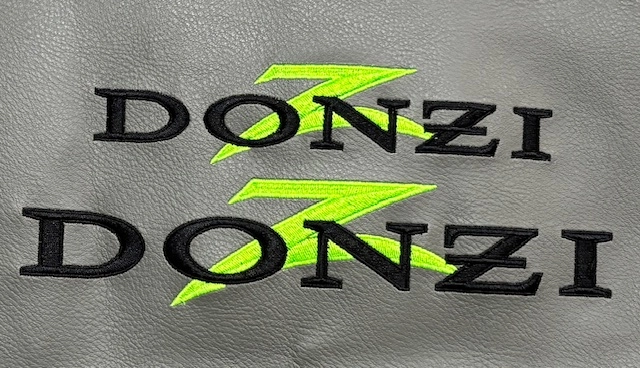Custom-made Scrubs with Embroidery for an Expert Appearance
Custom-made Scrubs with Embroidery for an Expert Appearance
Blog Article
The Art of Custom-made Embroidery: Unlocking the Keys to Creating Unique and Memorable Styles
Embroidery, a craft steeped in custom and creativity, holds within its elaborate stitches the power to transform fabric into a canvas of special expression. The tricks to developing custom-made needlework layouts that captivate the eye and leave an enduring impression hinge on a fragile balance of technique, creative thinking, and focus to information. As we look into the world of custom embroidery, we reveal the nuanced interplay in between thread choice, sew intricacy, and layout personalization that boosts a plain garment to a work of art. Join us on a trip with the art of custom embroidery as we unravel the secrets behind crafting really unforgettable and distinct developments.
Choosing the Right Embroidery Threads
When selecting embroidery strings, what essential factors should you take into consideration to make sure the best results for your custom layouts? The selection of embroidery thread is crucial in determining the final result of your stitched layout.
Moreover, the weight or thickness of the thread plays a considerable function in the appearance of the needlework. Thicker strings can add measurement and structure to your design, while finer threads are suitable for detailed information and small message. In addition, considering the color fastness and washability of the thread is important to make certain that your custom-made designs maintain their top quality and vibrancy gradually. By carefully examining these aspects and choosing high-quality strings that meet your details needs, you can improve the visual appeal and longevity of your embroidered developments.
Exploring Various Stitch Techniques
To look into the world of 'Exploring Various Stitch Strategies', one need to understand the ins and outs and subtleties that each sewing technique brings to the art of embroidery. Different stitch methods not only add aesthetic passion yet additionally add to the general appearance and measurement of the design. One preferred stitch strategy is the satin stitch, which involves carefully jam-packed parallel stitches to create a smooth and shiny surface, suitable for filling out shapes and creating bold outlines.
On the other hand, the backstitch is a versatile strategy typically used for detailing and including fine details. It involves sewing in reverse to produce a strong line of embroidery. In addition, the French knot stitch adds a tactile aspect to layouts, perfect for creating textured accents like flower facilities or decorative touches.
Discovering various stitch methods enables embroiderers to have fun with light, shadow, and depth within their styles, raising the aesthetic charm and artistic top quality of their needlework tasks. By understanding different stitching methods, one can unlock countless opportunities for creating one-of-a-kind and unforgettable personalized needlework pieces.
Incorporating Personalized Style Aspects
Having actually explored the intricacies of various stitch strategies such as the satin stitch, backstitch, and French knot, the focus now changes in the direction of integrating individualized style components in custom embroidery tasks. Personalized layout elements play an essential role in making embroidery projects really special and unforgettable. One way to incorporate customization is by adding initials, names, or substantial dates to the layout. This not only adds a customized touch yet also improves the sentimental value of the needlework item.
An additional method to include tailored style elements is by including symbols or concepts that hold unique definition to the recipient or mirror their passions and character. Integrating a preferred flower, animal, or hobby-related icon can make the embroidery layout more meaningful and tailored. Furthermore, picking shades that resonate with the recipient or straighten with the intended style can further improve the personalization find of the needlework task.
Grasping the Art of Shade Coordination

One key aspect of shade coordination is recognizing shade theory. This includes knowing how different colors engage with each other, the emotions they communicate, and just how they can be incorporated to develop aesthetically appealing layouts. By applying shade theory principles, embroiderers can create unified color palettes that boost the total appearance of the design.
In addition, focusing on comparison is essential in color control. Using contrasting shades can assist certain aspects of the additional reading design pop, improve readability, and develop a visually dynamic needlework piece. By understanding the art of color control, embroiderers can raise their designs and create unforgettable items that resonate with customers and visitors alike.
Enhancing Structure With Advanced Embroidery Stitches
French knots, as an example, are excellent for including tiny, increased dots to your layout, simulating the appearance of grains or producing a distinctive surface area. Bullion knots, on the various other hand, can be utilized to develop twisted, ropelike elements that add an extravagant feel to the embroidery. Seed stitching includes tiny, scattered stitches that can complete areas with a speckled texture, while turkey work produces fluffy, dimensional his comment is here accents reminiscent of animal hair or foliage. Trying out with these advanced needlework stitches allows you to press the boundaries of standard needlework and develop genuinely distinct and visually enticing textures in your layouts.
Final Thought
In verdict, the art of custom-made needlework includes a combination of selecting the best strings, exploring different stitch techniques, incorporating personalized layout aspects, grasping shade sychronisation, and boosting structure with sophisticated stitches. By understanding and implementing these crucial aspects, embroiderers can develop distinct and unforgettable layouts that showcase their creative thinking and skill. Embroidery enthusiasts can open the keys to creating beautiful and bespoke items that stand apart and leave a long-term impact.
Report this page